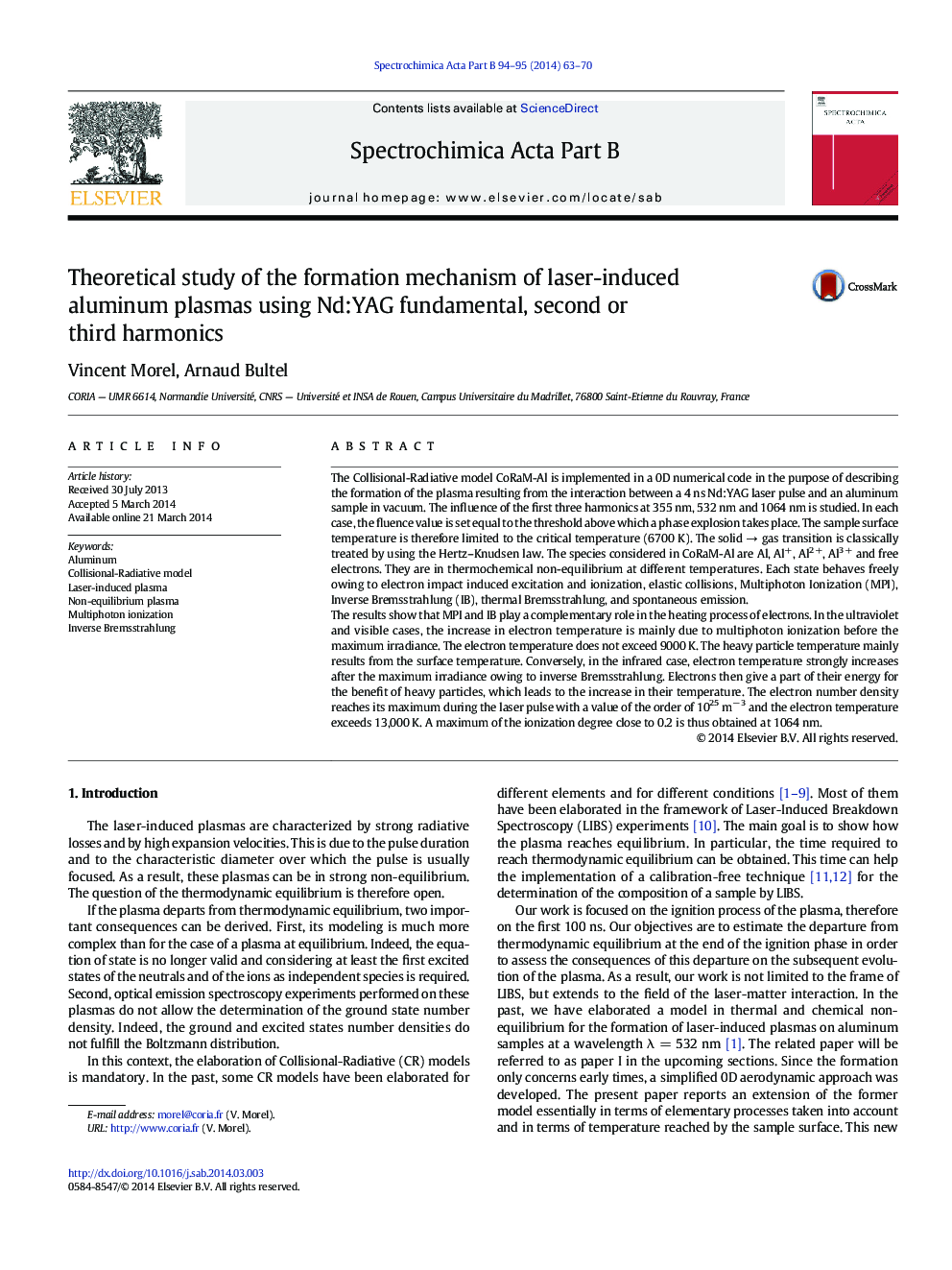| Article ID | Journal | Published Year | Pages | File Type |
|---|---|---|---|---|
| 1239692 | Spectrochimica Acta Part B: Atomic Spectroscopy | 2014 | 8 Pages |
•Collisional-Radiative model implementation describing the formation of the plasma.•Boltzmann plots and characteristic time scales studied.•Complementary role played by multiphoton ionization and inverse Bremsstrahlung.•Thermochemical equilibrium rapidly reached after the laser pulse.
The Collisional-Radiative model CoRaM-Al is implemented in a 0D numerical code in the purpose of describing the formation of the plasma resulting from the interaction between a 4 ns Nd:YAG laser pulse and an aluminum sample in vacuum. The influence of the first three harmonics at 355 nm, 532 nm and 1064 nm is studied. In each case, the fluence value is set equal to the threshold above which a phase explosion takes place. The sample surface temperature is therefore limited to the critical temperature (6700 K). The solid → gas transition is classically treated by using the Hertz–Knudsen law. The species considered in CoRaM-Al are Al, Al+, Al2 +, Al3 + and free electrons. They are in thermochemical non-equilibrium at different temperatures. Each state behaves freely owing to electron impact induced excitation and ionization, elastic collisions, Multiphoton Ionization (MPI), Inverse Bremsstrahlung (IB), thermal Bremsstrahlung, and spontaneous emission.The results show that MPI and IB play a complementary role in the heating process of electrons. In the ultraviolet and visible cases, the increase in electron temperature is mainly due to multiphoton ionization before the maximum irradiance. The electron temperature does not exceed 9000 K. The heavy particle temperature mainly results from the surface temperature. Conversely, in the infrared case, electron temperature strongly increases after the maximum irradiance owing to inverse Bremsstrahlung. Electrons then give a part of their energy for the benefit of heavy particles, which leads to the increase in their temperature. The electron number density reaches its maximum during the laser pulse with a value of the order of 1025 m− 3 and the electron temperature exceeds 13,000 K. A maximum of the ionization degree close to 0.2 is thus obtained at 1064 nm.
